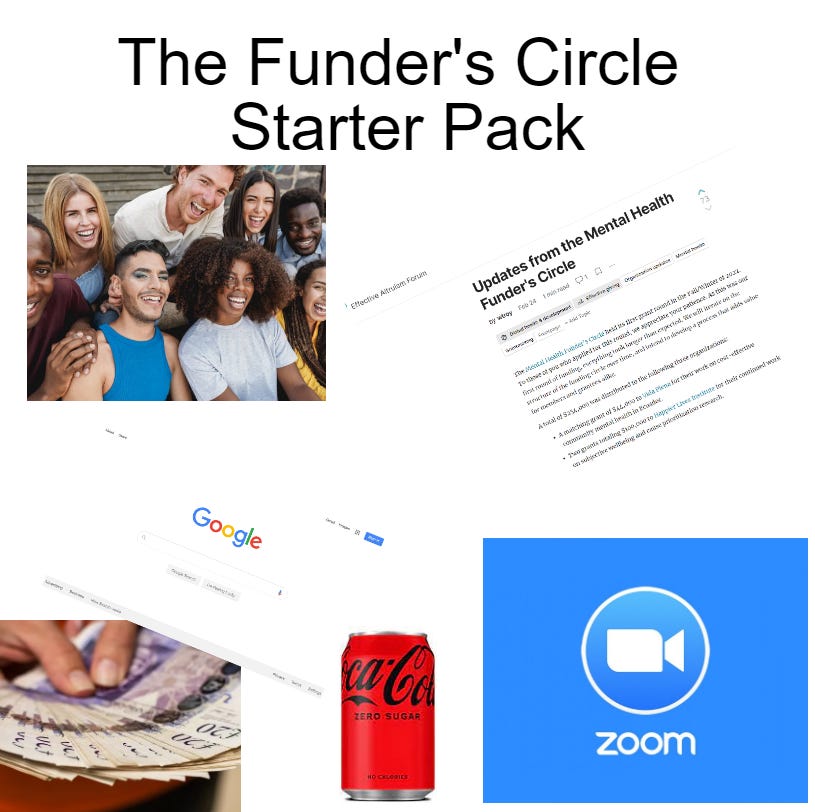I talked to Will who works with Charity Entrepreneurship to support the Mental Health Funder’s Circle. They got together to help promising mental health charities survive the “valley of death” between being first created and being proven to work, and are just completing their second round of funding charities.
“It’s definitely possible to organise a donor’s circle no matter what your level of giving,” Will says. And funder’s circles are trending in the charity world, even outside of EA - check out this funder’s circle for activists. So how could you create your own funder’s circle with your friends?
1. Get a group together
Gather a group of people who are happy to donate and willing to put in some research into different charities.
The mental health funder’s circle expects a minimum donation of $50,000. Having some kind of minimum donation, whether it’s $50 or $5000, can help you to avoid “tourists” who are just checking it out for a short while - you want people with a bit of skin in the game. That said, it’s certainly possible to have a circle where people just share information, with no commitment to donate on that topic.
How many people? “More than three and less than ten,” Will suggests. You should be able to easily have a conversation about important topics and all have your voices heard.
2. Find your niche
The smaller the amount your group is planning to donate, the more useful it can be to niche down. For example, if some of the funders were based in the Philippines and had experience working on or donating to mitigating the negative effects of climate change on low income population over the next fifty years, or if funders from India wanted to find local organisations focused on reducing extinction risks, or if funders from the midwestern United States wanted to look at local approaches to improving the wellbeing of farmed animals, they’d likely still find plenty of opportunities to choose from.
This might sound like the opposite of the typical EA approach of doing the most good, but Will says it has some benefits. Defining a cause area, philosophical beliefs and/or geographic region you’re looking to donate to can help you to avoid analysis paralysis and avoid trying to replicate the work of a much larger organisation like GiveWell or the Open Philanthropy project. And once you’ve found the best organisations within a small niche, you can compare them to more traditional EA charities - it’s possible you could identify a great charity that then gets picked up by GiveWell, Animal Charity Evaluators, or a large charitable foundation.
3. Meet monthly
Will suggests meeting at least monthly in order to keep a sense of momentum. That could be sharing information on different charities you could potentially donate to, or due diligence you’ve been doing on a charity that looks great, or reporting back on the donations you’ve made - anything that helps you to find great places to donate and encourages you to keep researching and donating.
The mental health funder’s circle gives out grants twice a year. That gives roughly six sessions to meet, agree on priorities, start sharing ideas of different charities, contact the best charities, do your due diligence, and make your donations. The time will go faster than you think!
Are you thinking of starting a funder’s circle? Tweet me @EAheadlines or comment below to find your co-funders, and message Will (wtroy) on the EA Forum for more tips. He says this space is moving so fast, the advice may have changed between the interview and publication, so definitely reach out!




